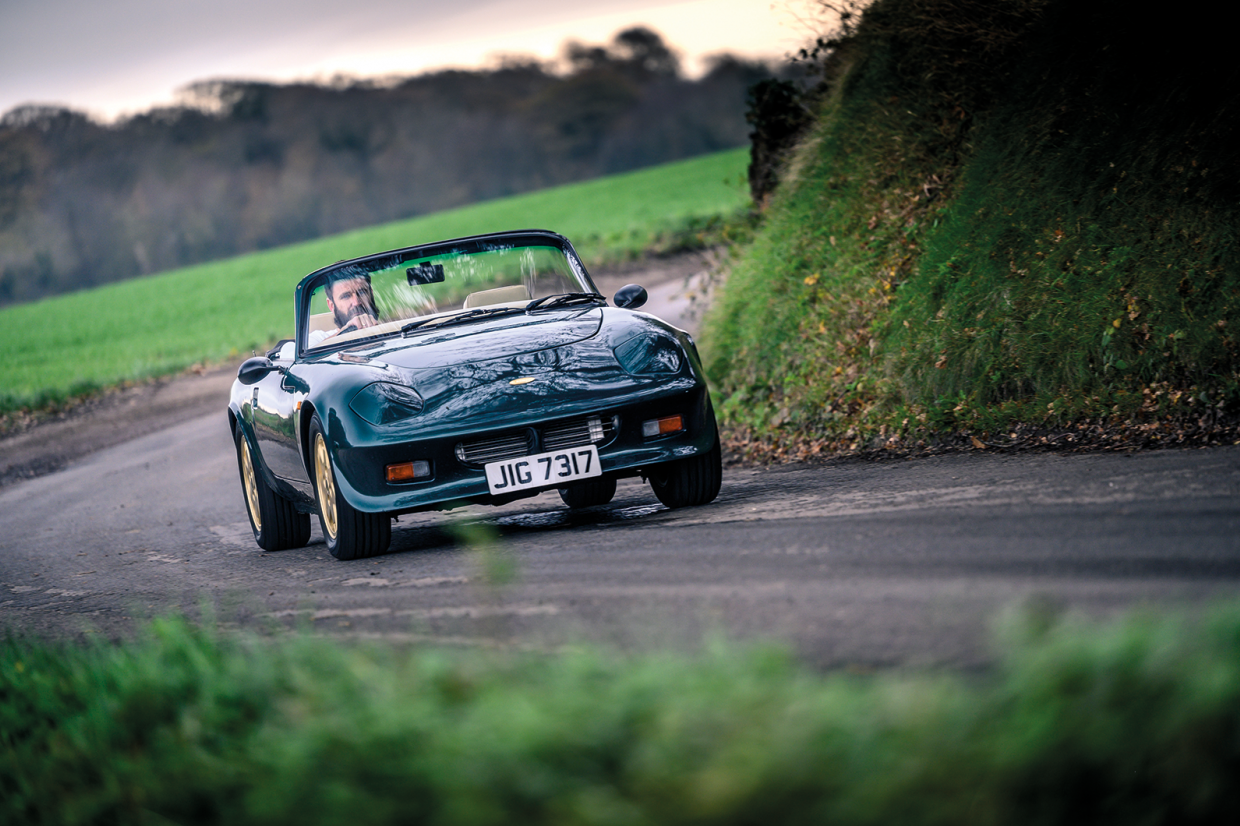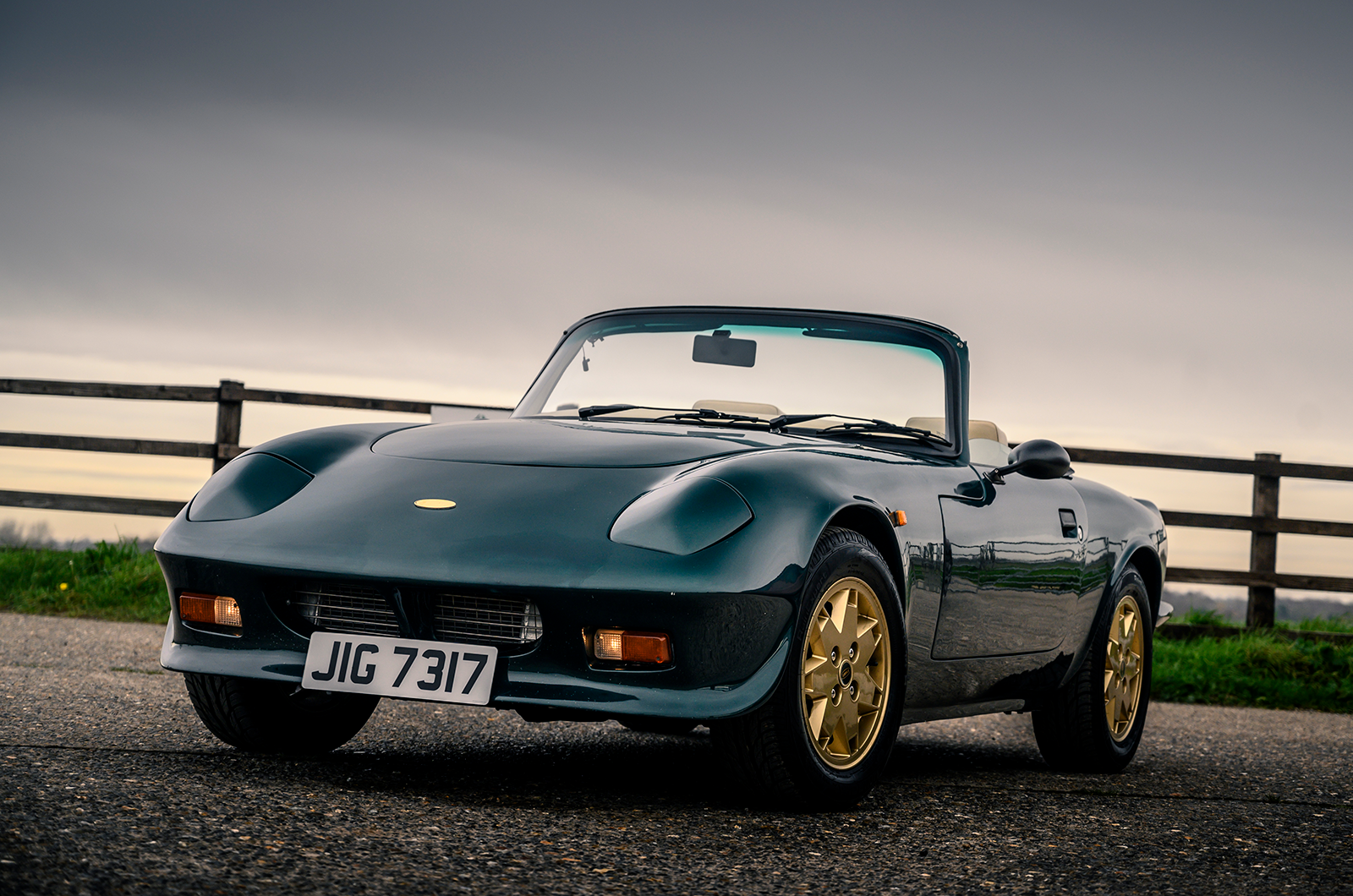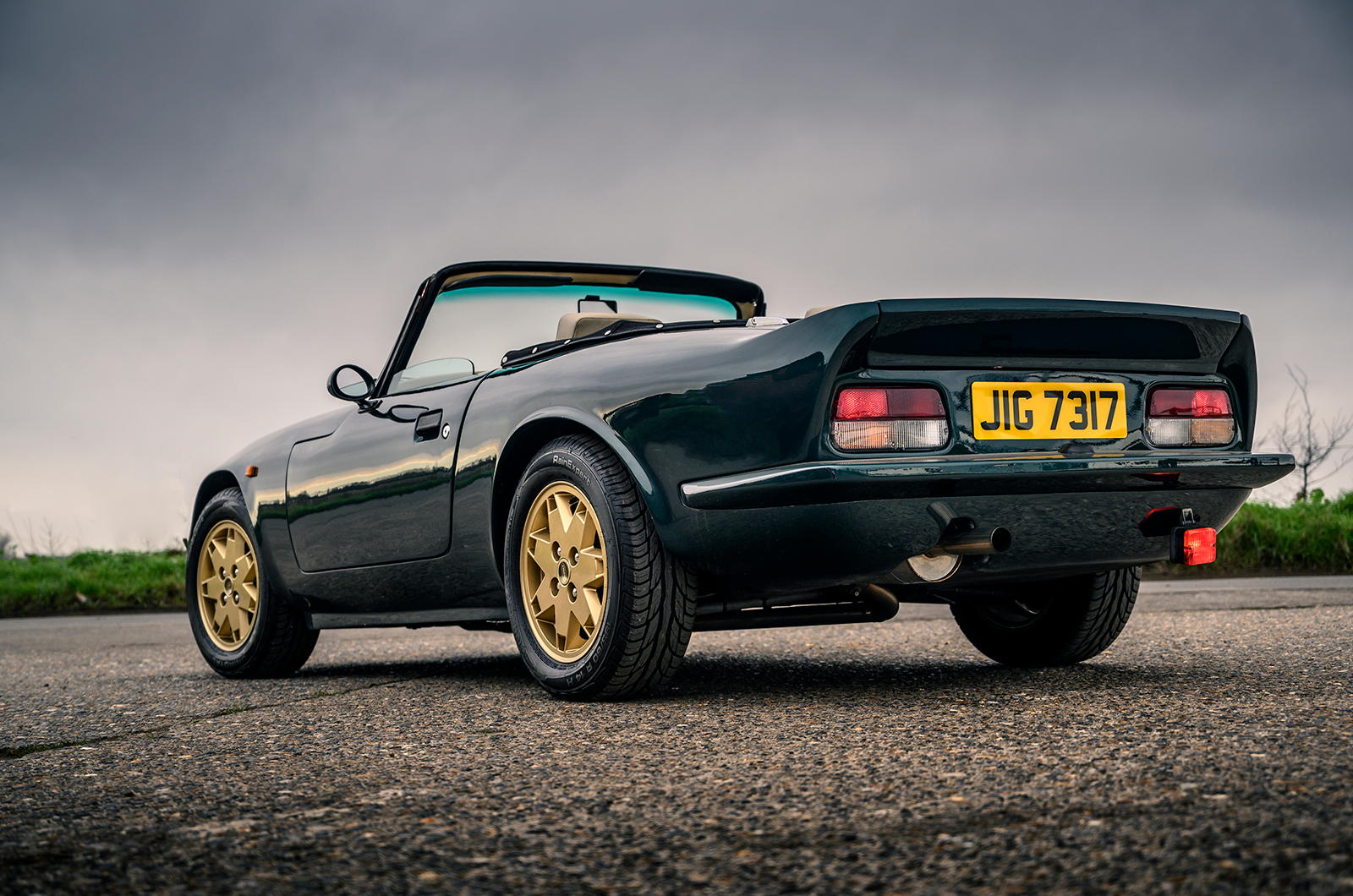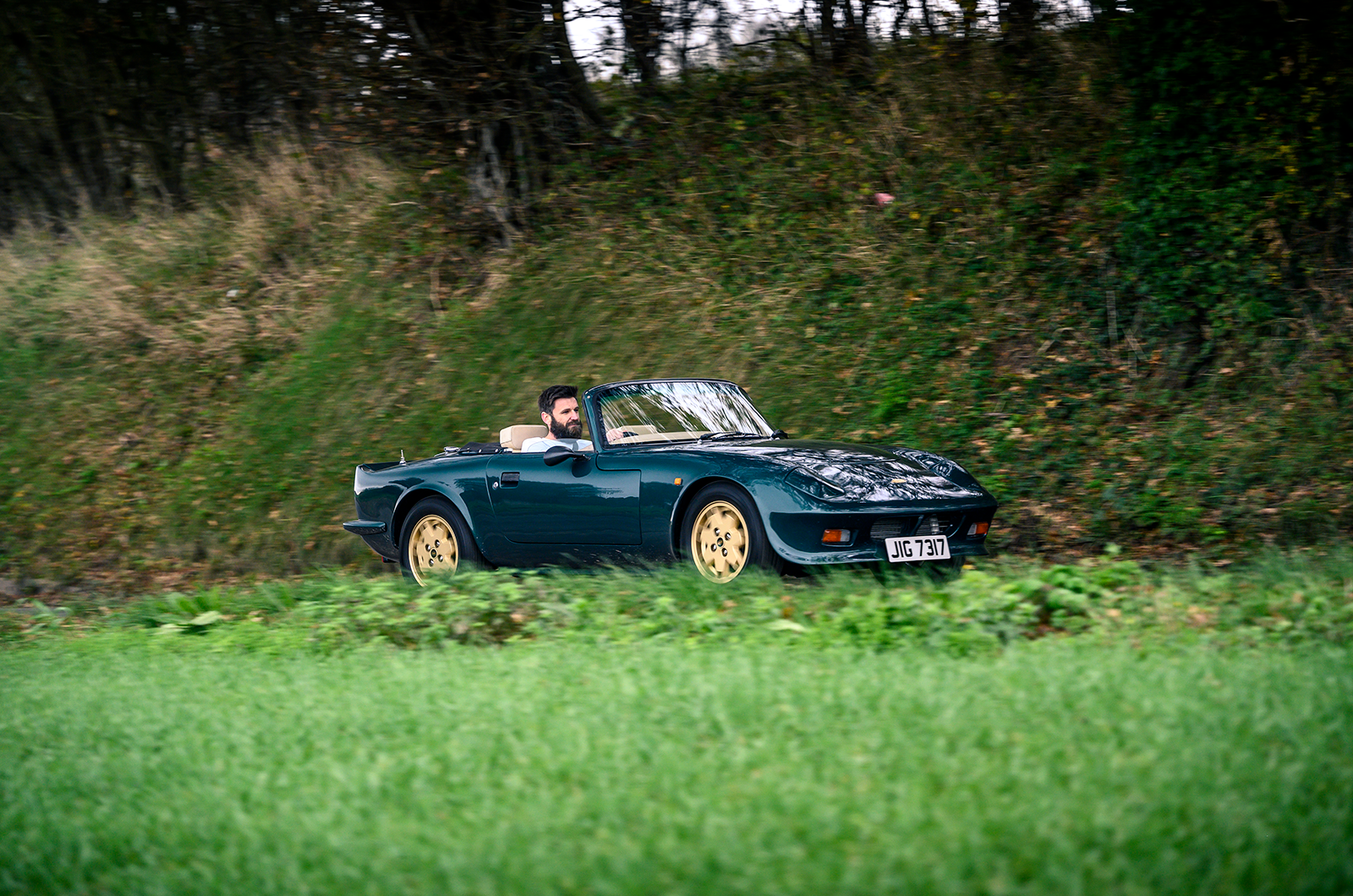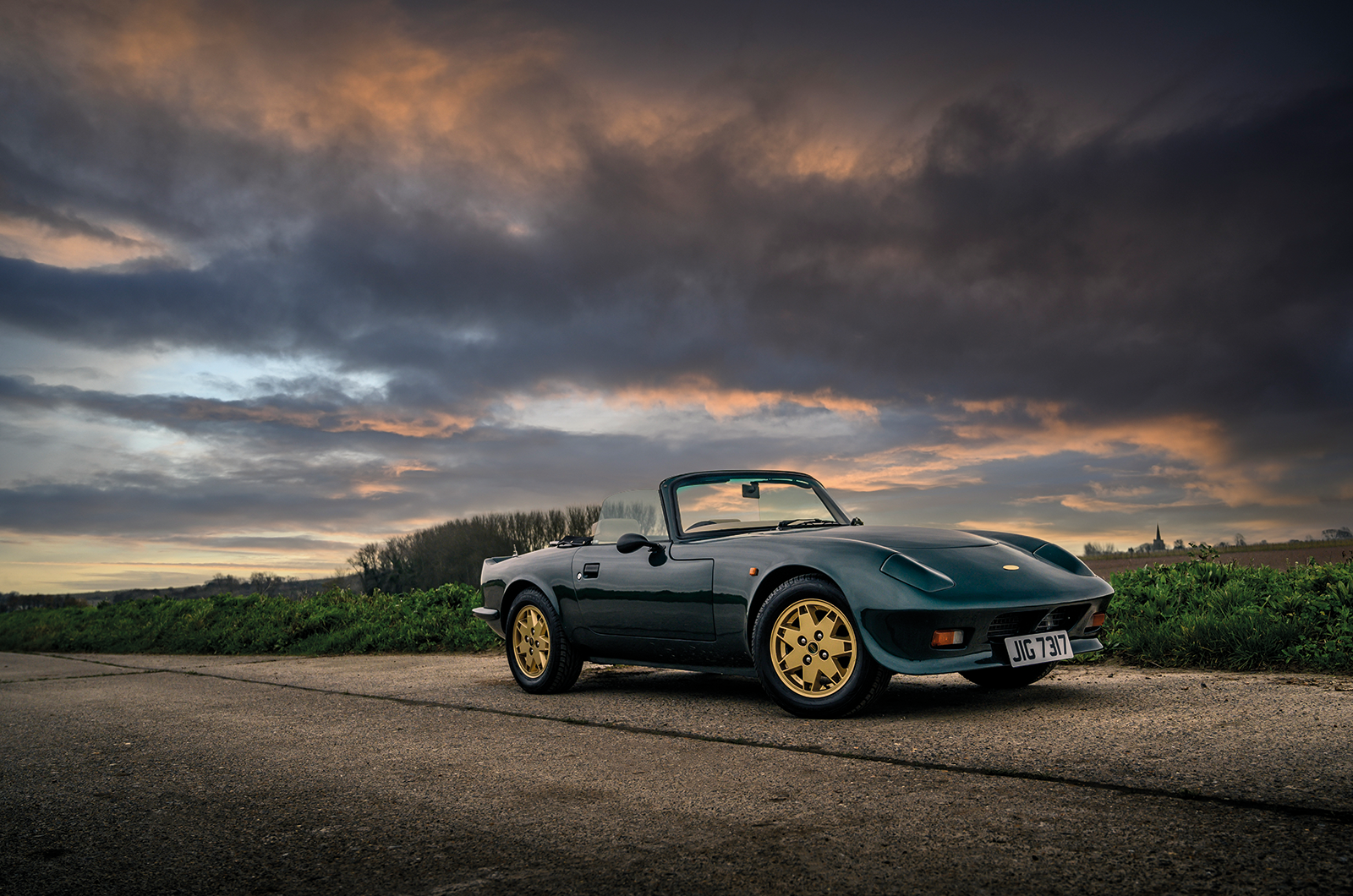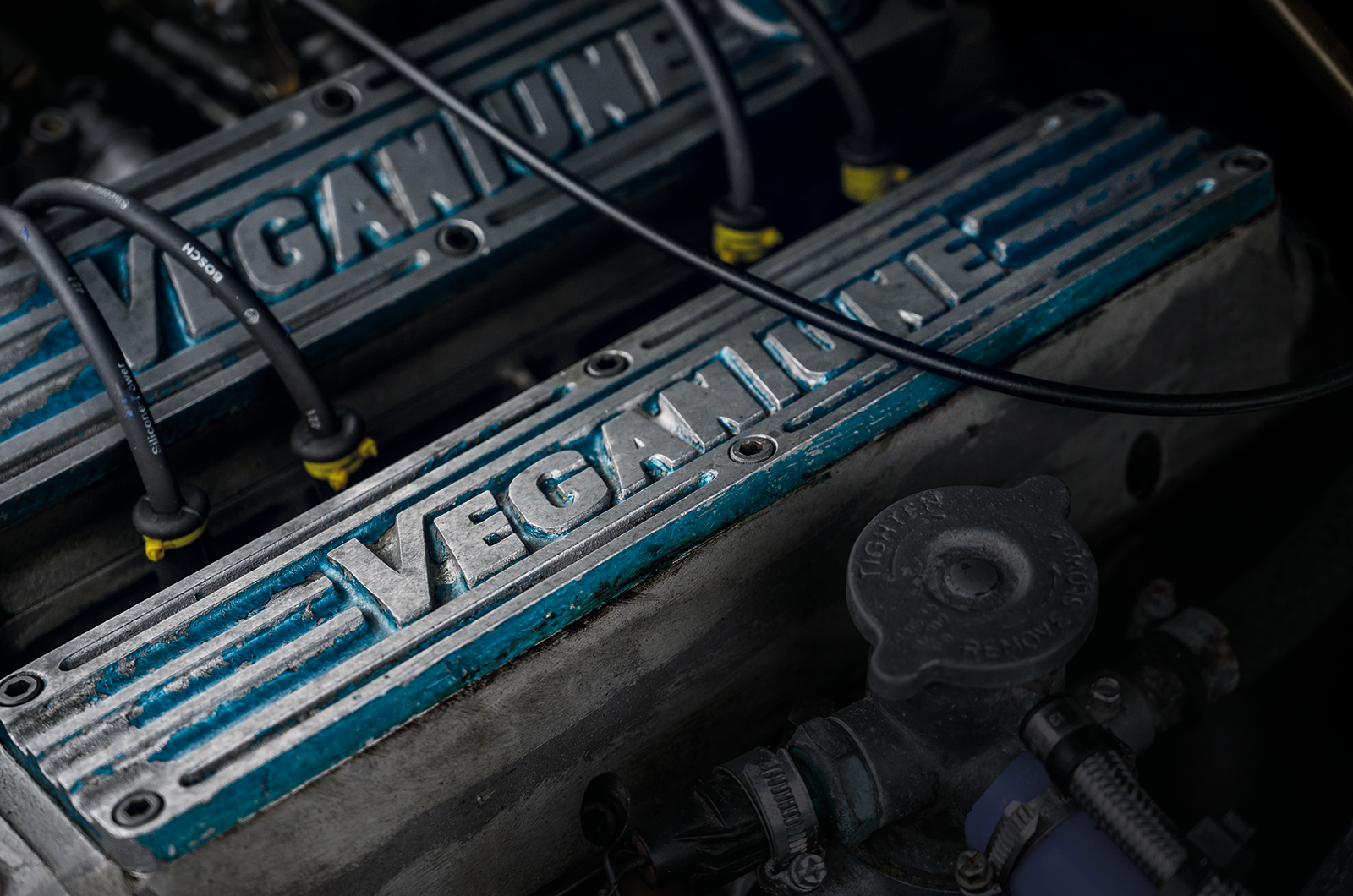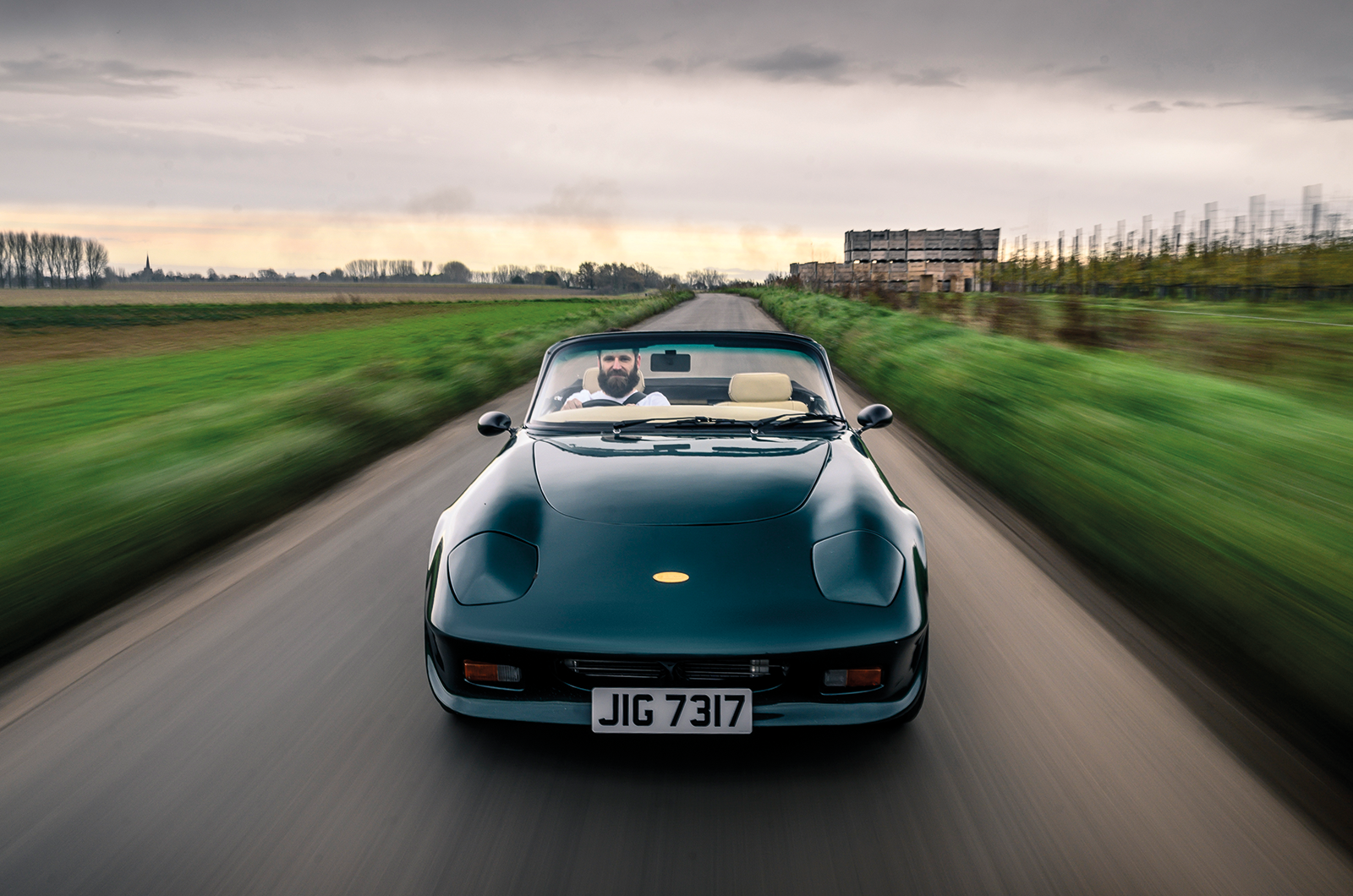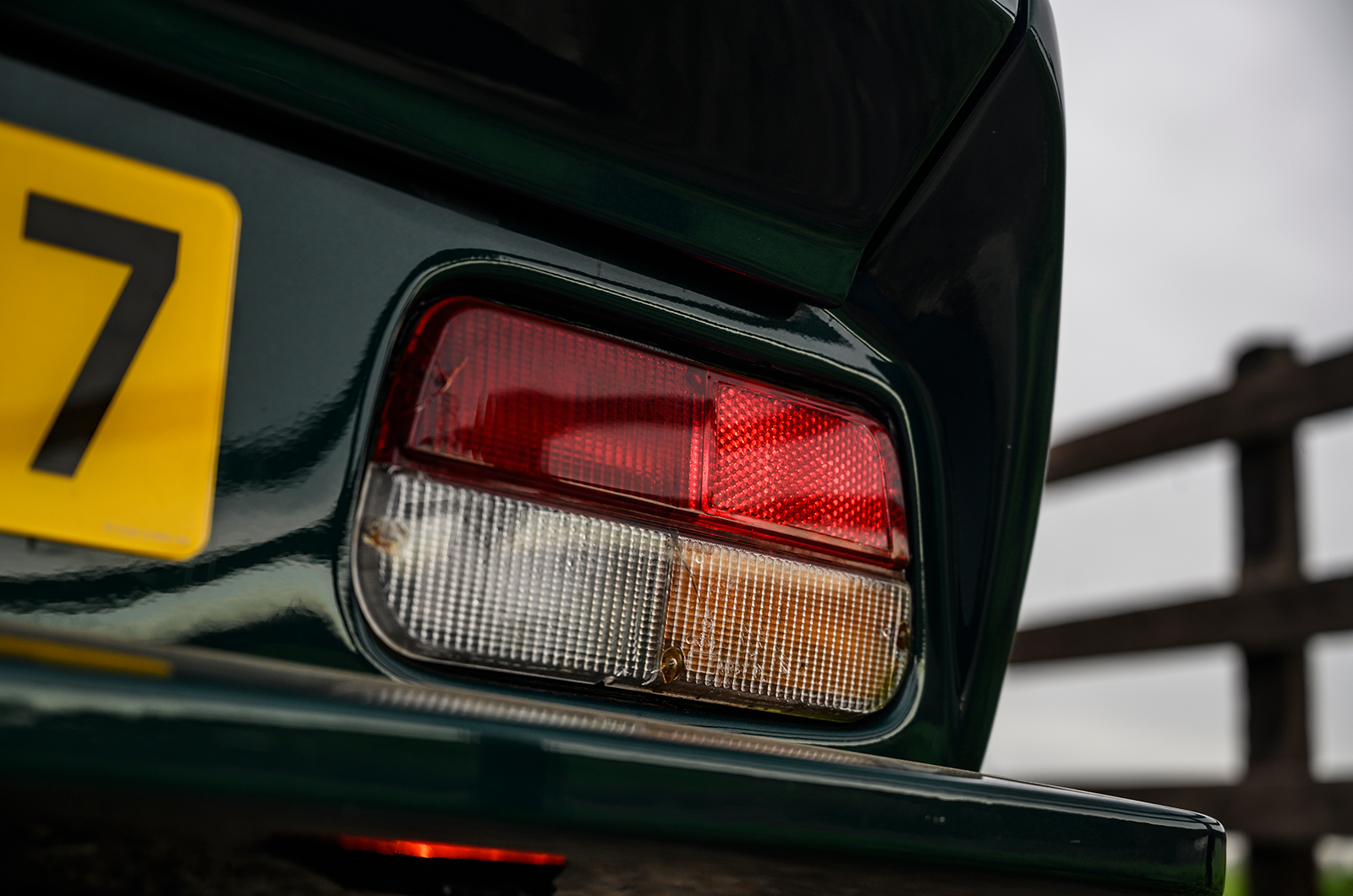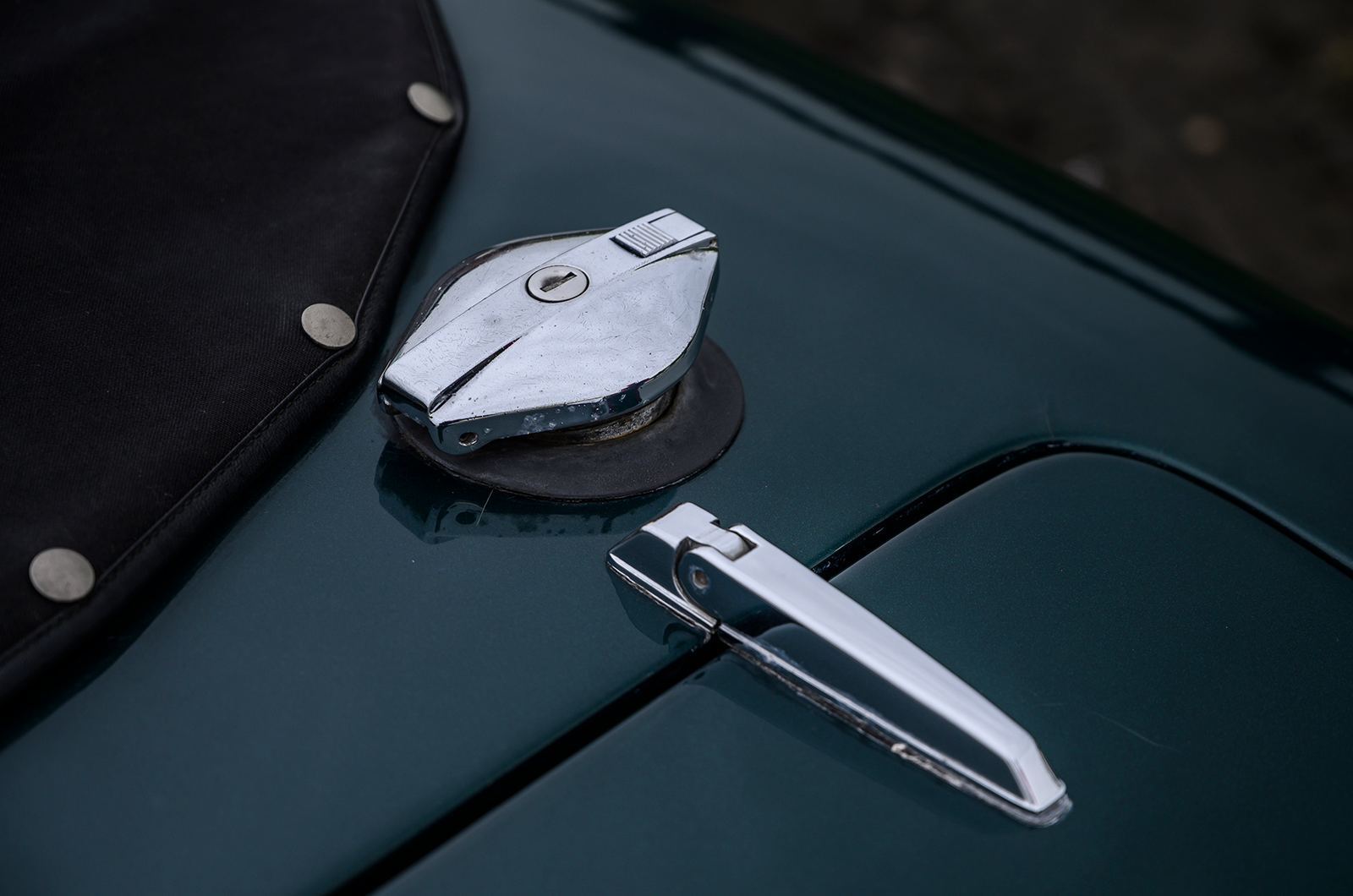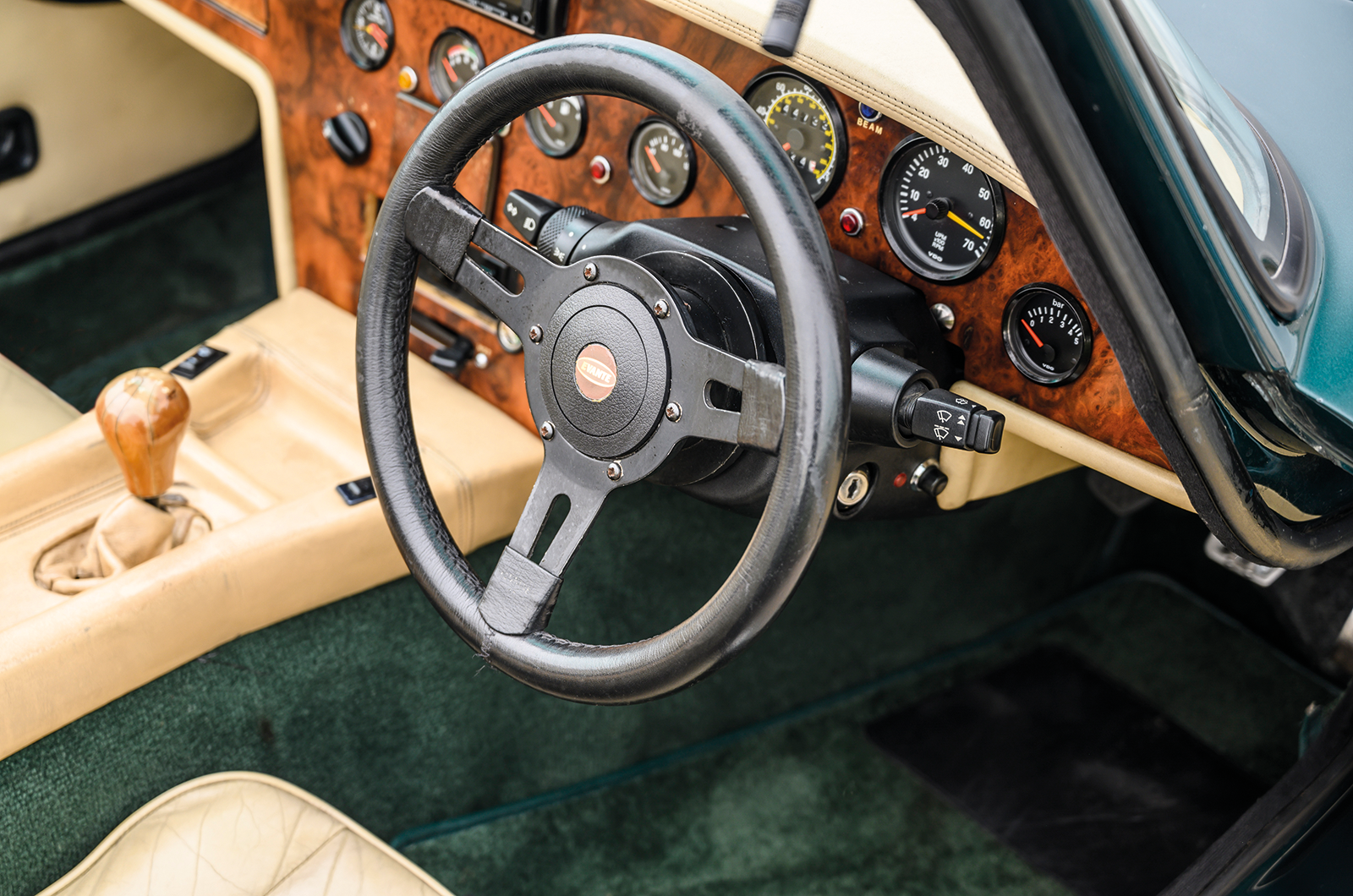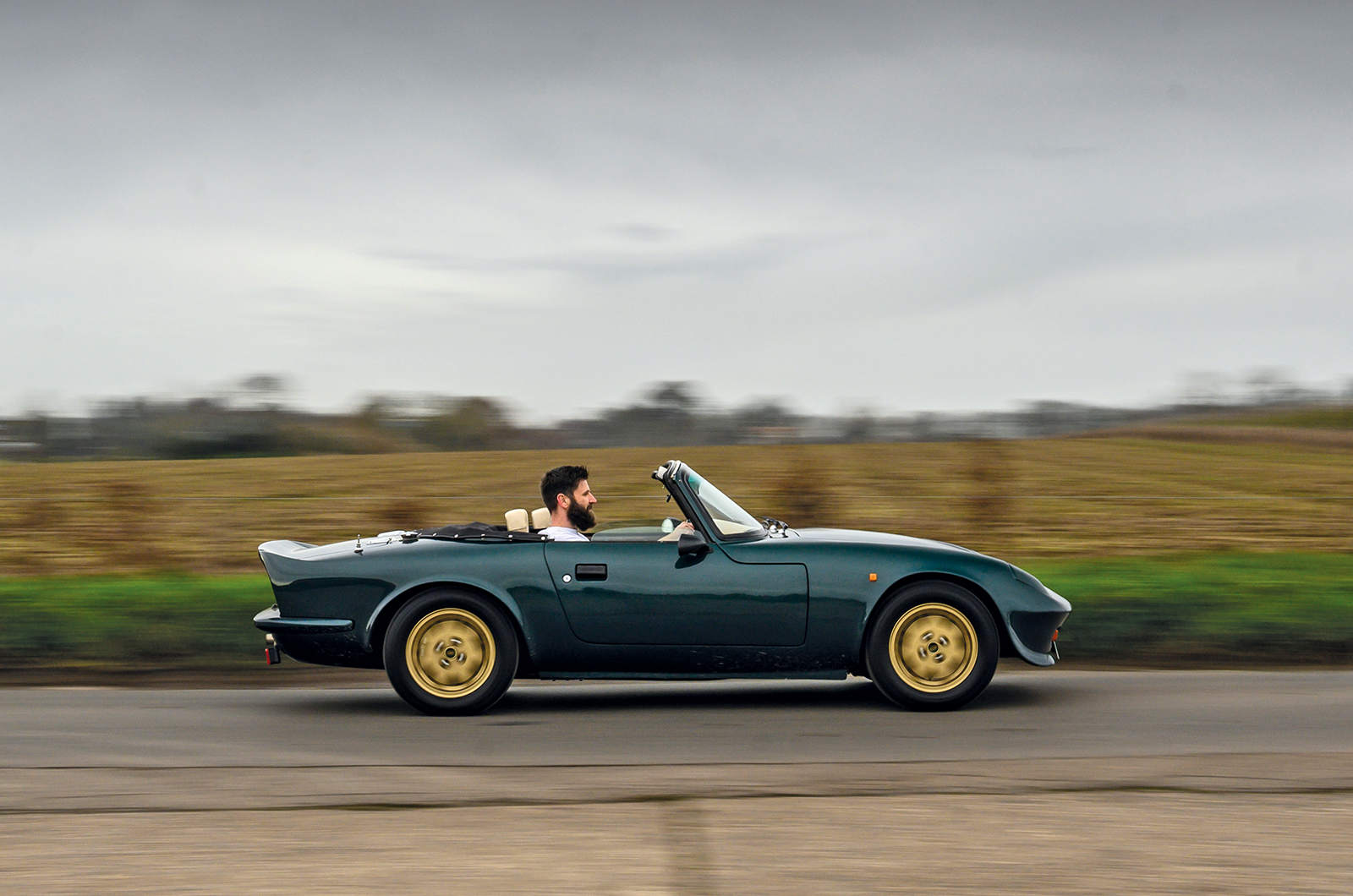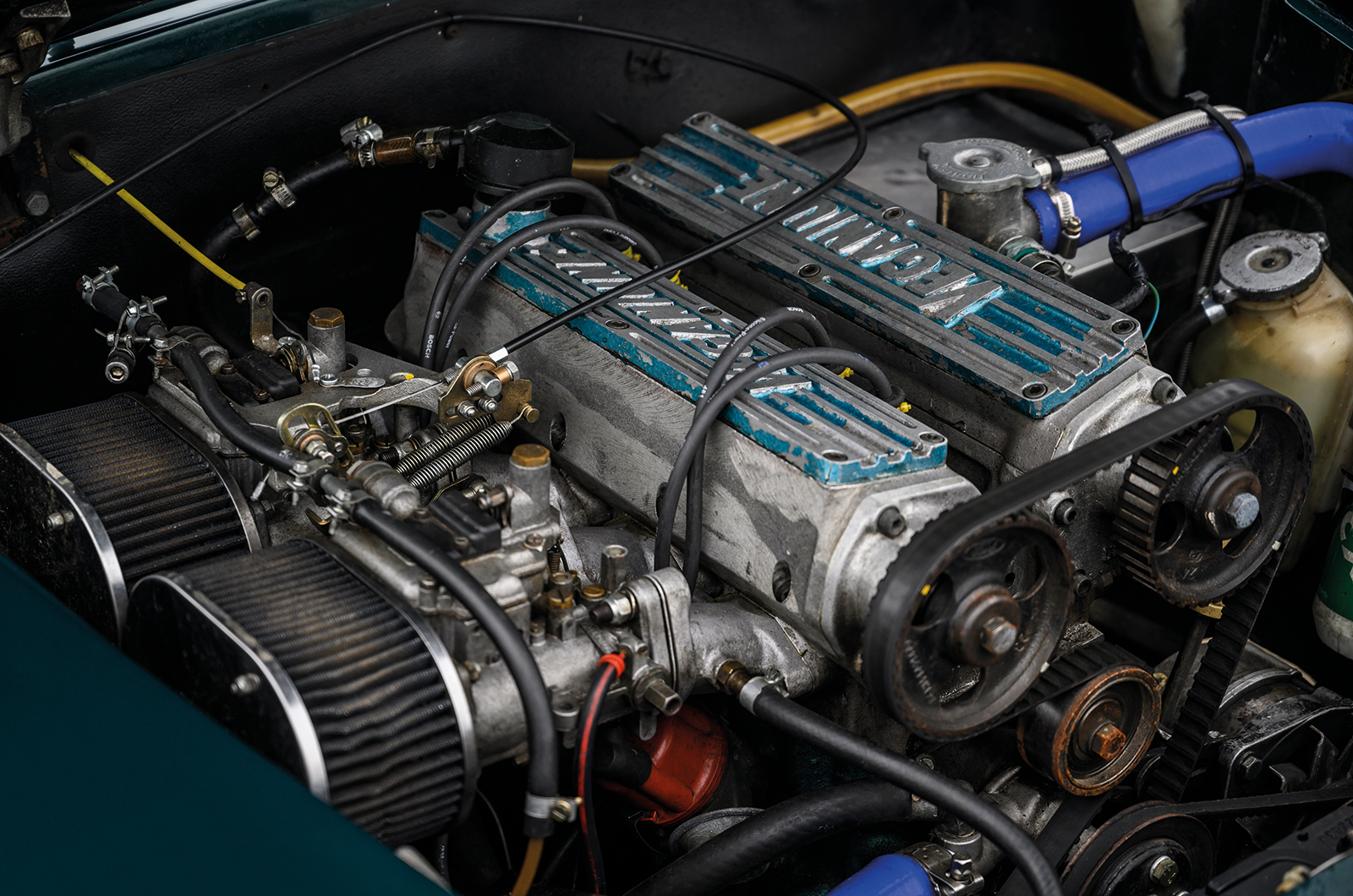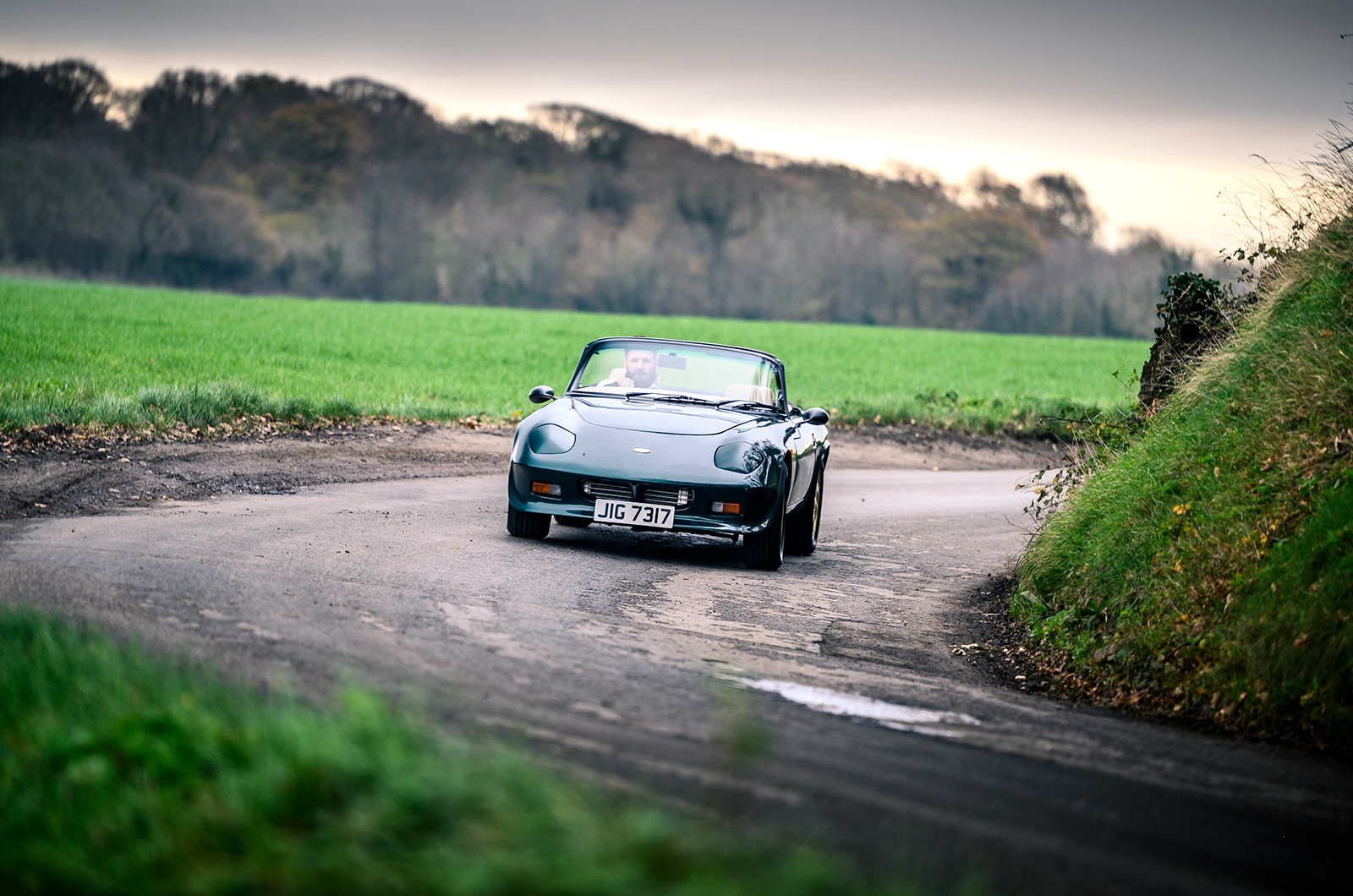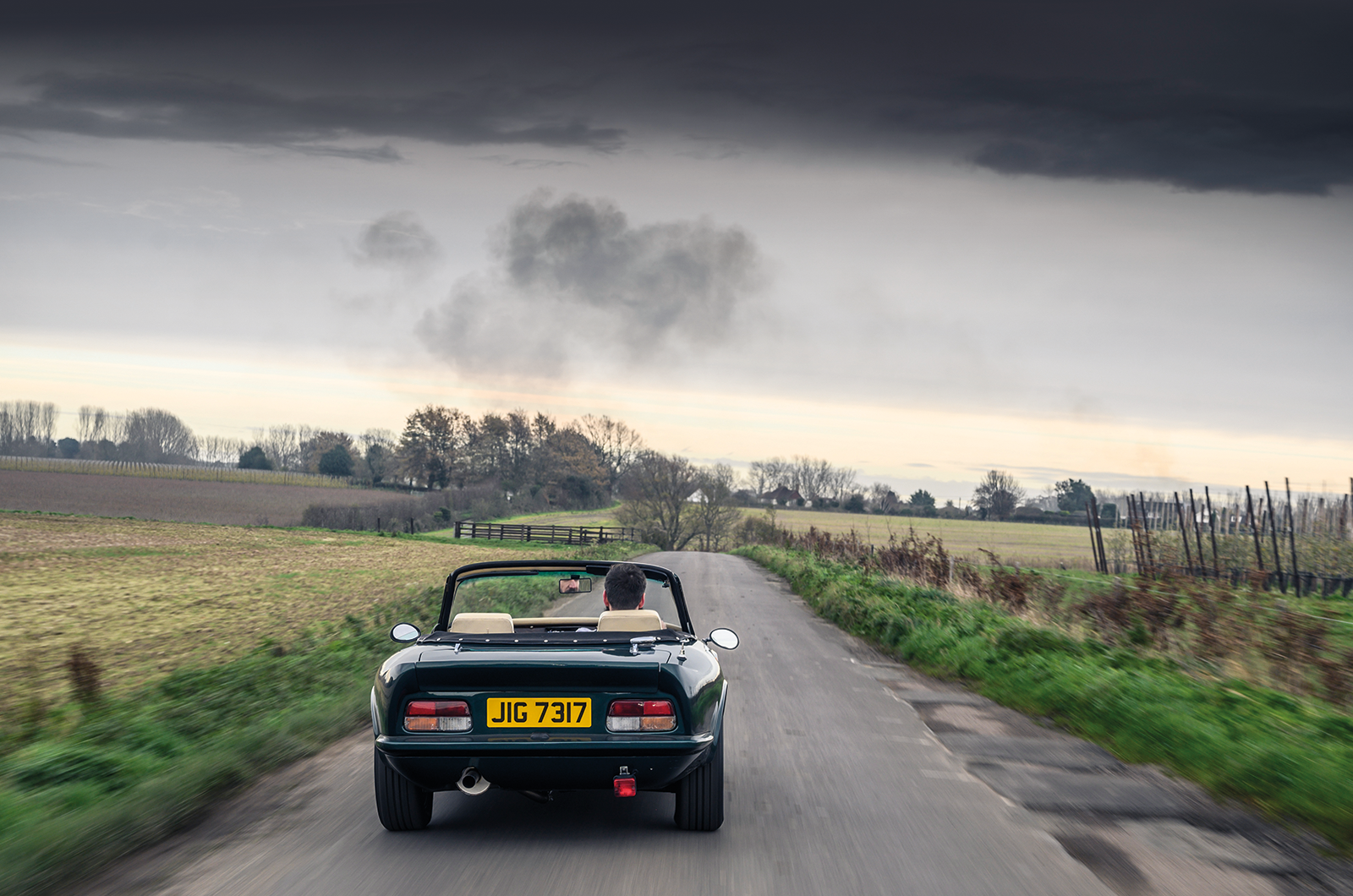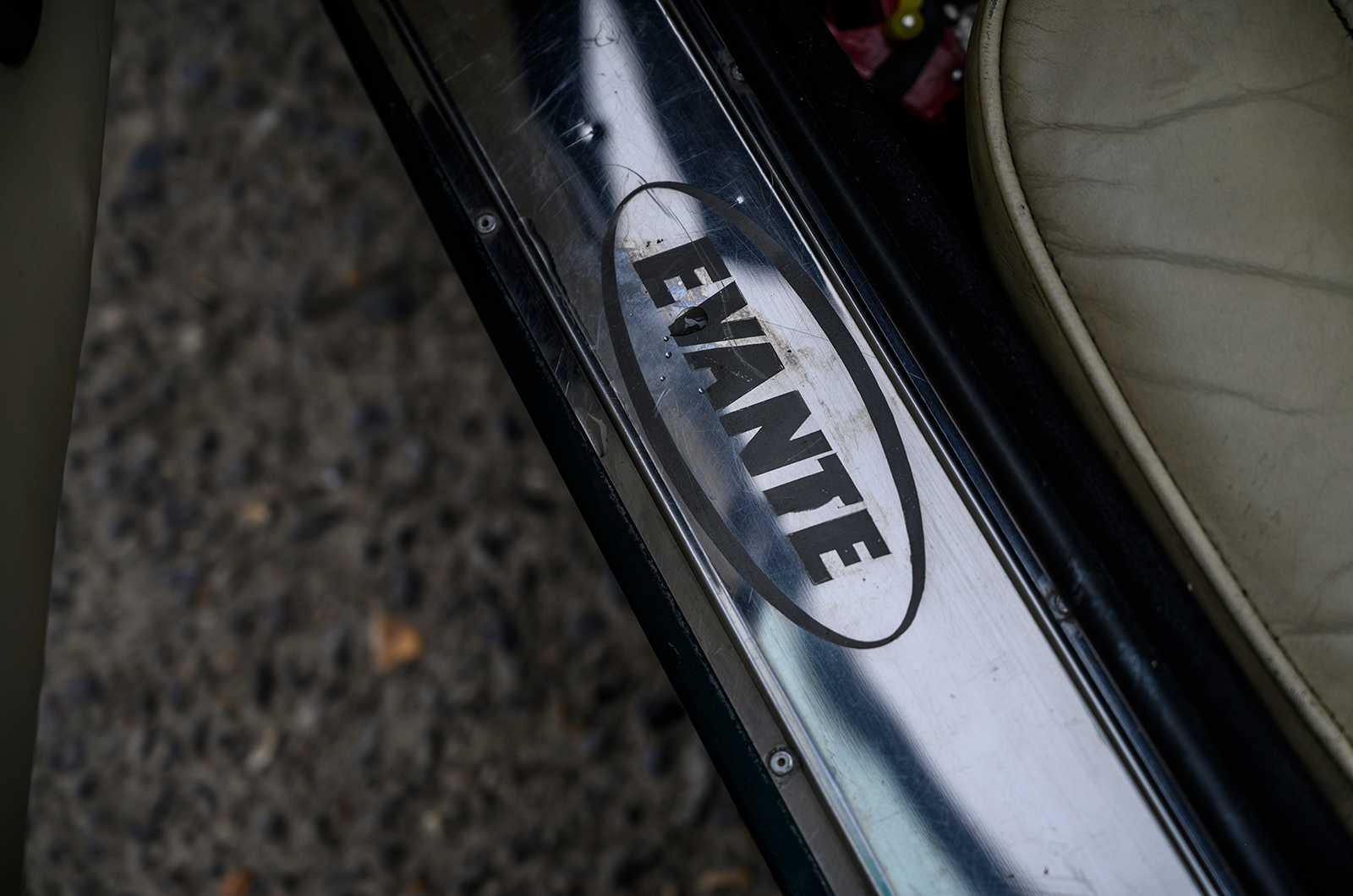Split-seconds later you can reach licence-teasing speeds, and getting there is a blast: it works through the gears beautifully, with the torquey ‘four’ perfectly matched to the drivetrain.
The big carbs don’t like early changes and low revs, but let it run out out to 6000rpm and it really flies. The angry noise is glorious at anything above 4000rpm, and the higher it climbs the better it gets.
Doing away with the Elan’s backbone chassis doesn’t hurt the Evante a bit, and it feels every inch a match for the Lotus on twisting rural back-roads.
It feels more planted than its ageing inspiration, too, partly due to firmer suspension but also more modern rubber (and more of it). Despite the bigger contact patch, there’s plenty of feel through the little Mountney wheel, with steering that’s weighty and communicative.
The Evante is an engaging classic car to drive
Driving quickly in the Evante soon becomes addictive and today, 30 years after the fact, it’s difficult to see why little more than 100 cars ever left the workshops at Cradge Bank.
When Lotus eventually revived the Elan name in 1989, the car it built – the M100 – could not have been much further removed from its namesake.
It had a backbone chassis, but was bigger, heavier and front-wheel-drive: reflecting the firm’s ambition more than its ethos. The Evante, on the other hand, remained true to the original formula, overcoming most of the Elan’s problems while adding few of its own.
Unlike in the Elan, the seats adjust for rake, helping you find a comfy driving position
There were plenty of reasons why the Evante failed to sell in large numbers – contentious looks, question marks over the reliability of the VTA and the arrival of the MX-5 – but the car that most hurt its prospects was probably the original Elan.
At just under £15k in ’88, a 140TC was considerably more than a secondhand Sprint – even at the height of the classic car boom.
But with a typical Sprint now costing £40k-plus, and Evantes still changing hands for little more than their list price new, perhaps the punchy little roadster’s time has finally come.
Images: Olgun Kordal
Thanks to UK Sports Cars
Factfile
Vegantune Evante 140TC
- Sold/number built 1987-’93/106
- Construction steel tubular chassis with glassfibre body
- Engine iron-block, alloy-head, dohc 1699cc ‘four’,with two Dell’Orto 40DHLA carburettors
- Max power 140bhp @ 6500rpm
- Max torque 129lb ft @ 3000rpm
- Transmission five-speed manual, RWD
- Suspension independent, by double wishbones, coil springs, telescopic dampers
- Steering rack and pinion
- Brakes 10in (254mm) discs, with servo
- Length 12ft 2in (3720mm)
- Width 4ft 10½in (1490mm)
- Height 3ft 8½in (1130mm)
- Wheelbase 7ft ½in (2140mm)
- Weight 1607lb (720kg)
- 0-60mph 6.4 secs
- Top speed 132mph
- Mpg n/a
- Price new £14,887.70
- Price now £17,000*
*Price correct at date of original publication
READ MORE
Sunbeam Tiger vs Lotus Elan: brains or brawn?
Buyer’s guide: Lotus Elan (1963-’74)
Falling for a Lotus Elan M100
Your classic: Lotus Elan S4
Greg MacLeman
Greg MacLeman is a contributor to and former Features Editor of Classic & Sports Car, and drives a restored and uprated 1974 Triumph 2500TC
